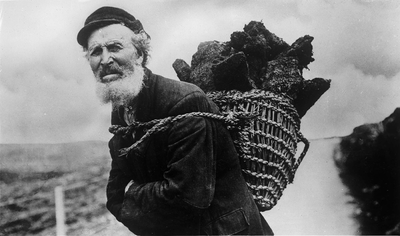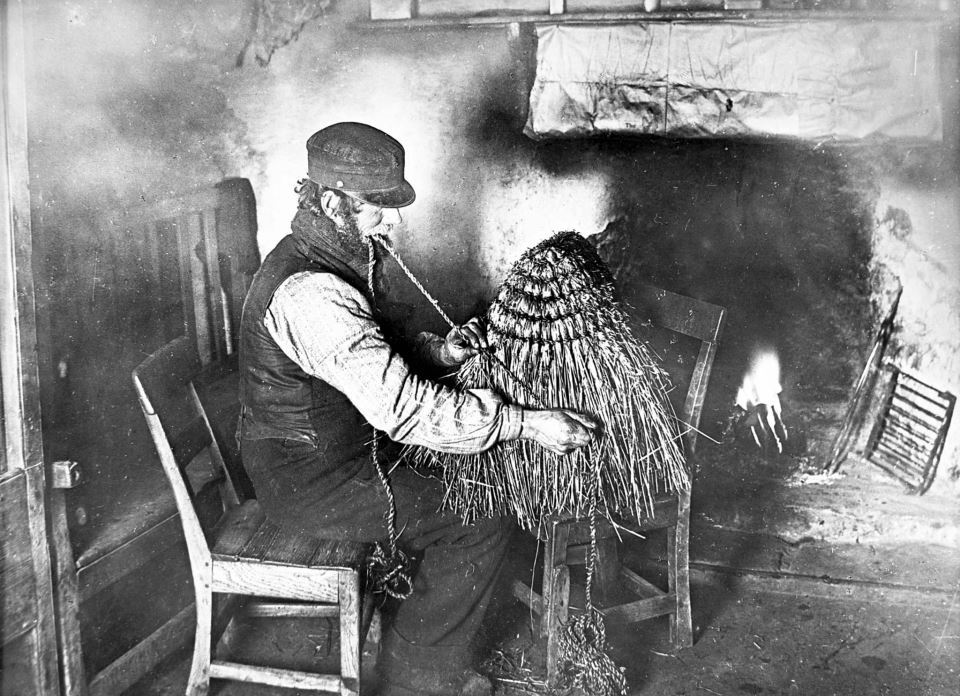
That night was the most dark and desperate as I’d lived. For three days and nights, my five crewmates and I had suffered. Since capsizing off the Naze of Norway, a terrible gale had driven us across the North Sea to the Shetlands.
So here we lay; our ship, The Hermann, wrecked on the rocks, battered by the waves and clinging to what remained of the mainmast.
“We must get to shore, she’ll sink any moment”, said Captain Obersen.
Above us, I could make out a cliff of black rock, 100ft high. The Hermann lay fore-and-aft along the cliff and rocked back and forth with the motion of the waves. With the rocking, the mizzenmast would strike the cliff edge with a fearful knocking, then swing away seaward.
“Captain” I shouted,
“What’s that lad”, said the Captain.
“I can get a line ashore.” I pointed up, at the cliff edge. “Up there, I’ll climb the shrouds. I’ll jump from the mizenmast and make fast a line”.
The Captain lifted his head and watched the swaying mast, then cast his eyes to the tattered shrouds and ratlines. He paused, thinking, assessing the risk, then issued his orders. “Away up the mast Hans”.

The story of The Hermann, a three-masted Danish Schooner, wrecked on the coast of Shetland in February 1900, is a remarkable one; characterized by bravery and humility. I was told the story by Rodney Smith, Skipper of the Mousa Boat.

The story begins on Friday 2nd of February 1900. The Hermann shipped a cargo of coals at Wemyss in Fife, Scotland, and left there for Moss in Norway. During the crossing of the North Sea, the wind shifted to the southwest, becoming squally, with heavy showers of rain and wet snow.
By Saturday 10th of February, when The Hermann was nearly at Moss, a very strong southerly gale was encountered, impeding further progress. The Hermann turned about and took Shelter off a headland, called the Naze of Norway. On Tuesday the 13th the weather worsened. The sea broke over the vessel repeatedly, while a blinding snowstorm raged overhead. On Wednesday and Thursday (14th and 15th of February) the weather got even worse with mountainous seas, threatening to engulf the ship at every moment. On Friday the 16th of February disaster struck! A succession of large waves capsized the ship, throwing her onto her beam. The crew, in terrible conditions, cut away the foremast, but she refused to right. The mainmast was then cut away and the ship regained her proper position. The sails however had been ripped to shreds and the vessel was utterly helpless to the wind. Over the next three days, The Hermann was driven before the storm, back across the North Sea to Shetland.

By daylight on Monday the 19th of February the crew caught sight of the Bressay Lighthouse. The wind then veered North East and the vessel was driven south towards Mousa and Sandwick. The crew knew they were in terrible peril and that night, at 3am, The Hermann was wrecked on the rocks at Burraland. Stuck on the rocks, below a 100-foot cliff, there appeared no means of getting ashore. One of the crew, however, a sailor called Hans Svendsen, devised a bold plan to save the day. He tied a line to his waist and climbed to the top of the mizzenmast. He watched for a chance when the vessel rolled towards the shore, and sprung from the masthead to the cliffs. Hans then made fast the line, and brought his crew mates ashore to safety. Just two hours later the ship went down in deep water.

The crew remained among the rocks on the shore til 7am in the morning, then found their way to the house of Mr George Smith, Pund, where they were cared for. Utterly exhausted the crew rested for three days and nights. On Thursday the 22nd of February Captain Odbersen and his crew went to Lerwick and the Captain made an account of the disaster to the Shetland Times. The story was published with the headlines “Wreck of a Danish Schooner at Sandwick” and “Marvellous Escape of the Crew”.
It was this newspaper article, from 124 years ago that Rodney Smith of the Mousa Boat discovered and began sharing with passengers of the Mousa Boat. Rodney also made enquiries with a museum in Naxo, Denmark, where the schooner was from. The museum took an interest and managed to track down the descendants of Hans Svendsen, our hero. They were completely unaware of the story and his bravery. In a lovely ending to the story, the descendants of Hans Svendsen intend to make a visit to Shetland this year, to meet Rodney and the site of the wreck.

If you’d like to meet Rodney, see the site of the wreck, and hear the story, told by Rodney, the Mousa Boat runs daily trips to Mousa at 11:30am, from Sandwick, Shetland. Our week-long hiking tours to Shetland also include Mousa, together with many other amazing islands and locations throughout Shetland.
Many thanks to George Ewen for the images.




